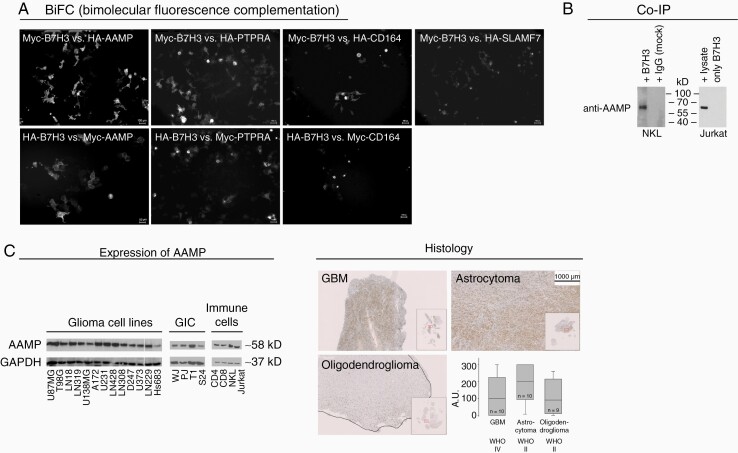Figure 1.
Identification of new binding partners of B7-H3. (A) Potential binding partners, identified by mass spectrometry and yeast two-hybrid screen were evaluated by BiFC. AAMP, CD164, and PTPRA showed a fluorescence signal regardless of whether they were expressed in the Myc- or HA-vectors expressing a hemi-fluorescence protein when co-expressed with Myc- or HA-vector cloned B7-H3 expressing the other half of the fluorescence protein. SLAMF7 showed a signal only when cloned into the HA-vector when co-expressed with Myc-B7-H3. (B) Co-immunoprecipitation using recombinant B7-H3 which was pulled down with anti-B7-H3 antibody (NKL) or via a TEV-tag (Jurkat) cells confirms AAMP as a binding partner of B7-H3 in untransduced natural killer (NKL) and T-cell (Jurkat) lines. (C) AAMP is ubiquitously expressed in different glioma cell lines, glioma initiating cultures (GIC), freshly isolated CD4 and CD8 T cells as well as NKL and Jurkat immune cell lines. (D) AAMP expressed in tumor tissue of glioblastoma, astrocytoma, and oligodendroglioma does not correlate with tumor grade (magnification: 1:10).

